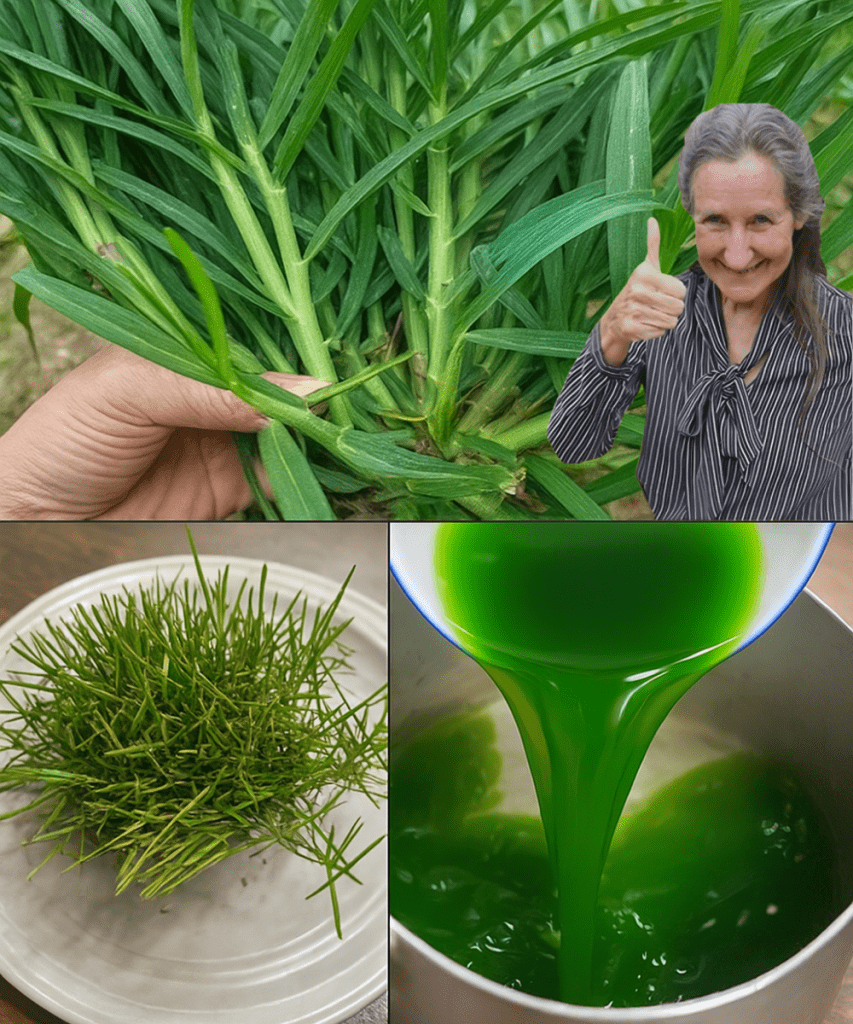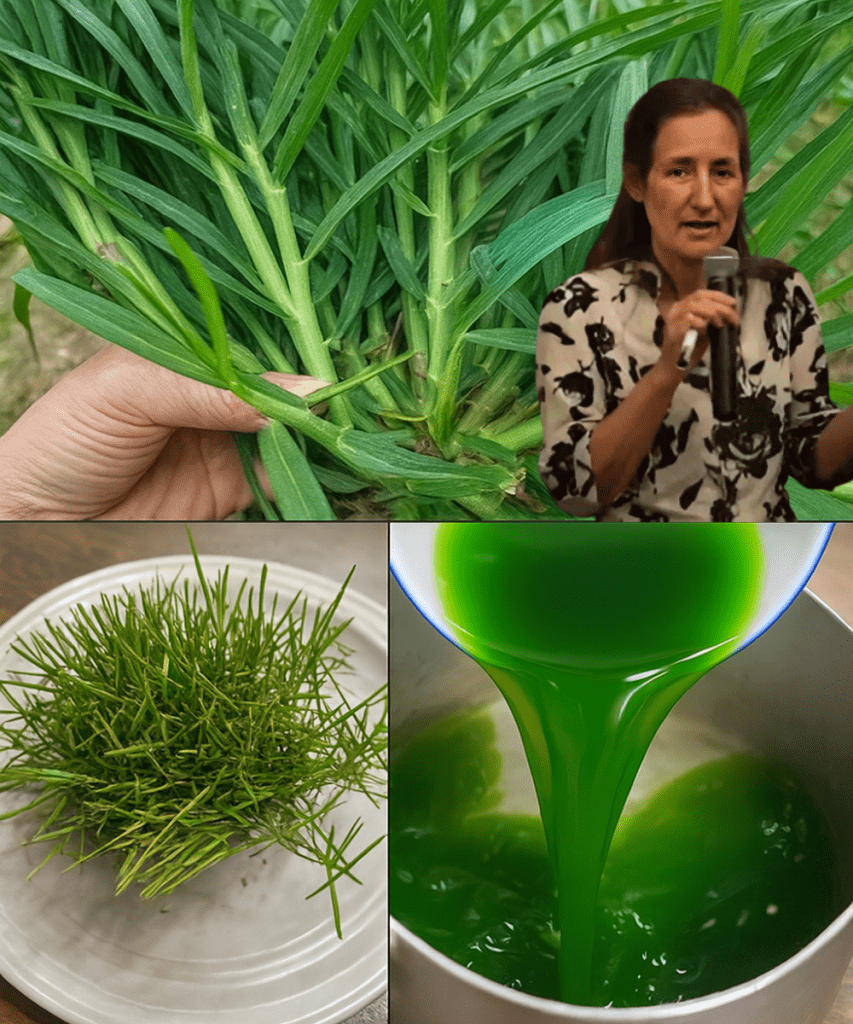Imagine stumbling across a patch of grass so tough it thrives where others wither, a plant so unassuming yet brimming with secrets waiting to be uncovered. Eleusine indica, commonly known as goosegrass, is more than just a weed. It’s a botanical marvel, a survivor, and a quiet influencer in ecosystems and human lives alike. This humble plant sparks curiosity with its tenacity and hidden potential, inviting you to explore its story. From its rugged resilience to its surprising uses, goosegrass is a testament to nature’s complexity, urging you to linger and discover why this overlooked species deserves your attention.

🌱 A Plant That Defies the Odds
Goosegrass doesn’t beg for attention. It grows in cracks of sidewalks, edges of fields, and forgotten corners of gardens, flourishing under conditions that would defeat most plants. Its ability to thrive in compacted soil, drought, and intense heat makes it a master of survival. The plant’s low-growing, sprawling habit allows it to hug the ground, evading lawnmowers and heavy foot traffic. Each blade seems to whisper a story of endurance, a reminder that strength often lies in the unlikeliest of places.
This annual grass, native to Africa but now a global citizen, spreads its wiry stems like a network of determination. Its flattened, silvery-green leaves and compact seed heads form a rosette that’s both practical and quietly beautiful. Goosegrass doesn’t just survive; it conquers, adapting to diverse climates from tropical jungles to temperate urban sprawls. Its presence in over 60 countries speaks to its relentless drive, making it a plant that feels oddly relatable—a fighter in a world that’s often unforgiving.
🌍 A Global Traveler with Deep Roots
Goosegrass has a knack for showing up where it’s least expected. Its seeds, tiny but mighty, hitch rides on wind, water, animals, and even human shoes, ensuring its legacy across continents. This adaptability isn’t just a quirk; it’s a survival strategy honed over millennia. The plant’s deep, fibrous roots anchor it firmly, allowing it to extract nutrients from even the poorest soils. It’s no wonder farmers and gardeners both admire and curse its persistence.
Beyond its physical prowess, goosegrass carries a cultural footprint. In some African communities, it’s been used for centuries in traditional medicine, treating ailments from fevers to digestive issues. Its seeds, though small, have served as a famine food in times of scarcity, offering sustenance when crops failed. This duality—both a nuisance and a lifesaver—makes goosegrass a plant of contradictions, one that challenges us to see beyond its “weedy” label.
💪 The Science of Survival
What makes goosegrass such a formidable force? Its biology is a masterclass in efficiency. The plant employs a C4 photosynthetic pathway, a trait that lets it thrive in high temperatures and low water conditions. Unlike many plants, goosegrass maximizes energy use, producing more biomass with less effort. Its seed heads, resembling miniature zippers, can produce thousands of seeds in a single season, each capable of germinating years later. This reproductive prowess ensures goosegrass is never truly eradicated.
Its resilience extends to chemical warfare. Goosegrass has shown resistance to common herbicides like glyphosate, frustrating farmers but earning respect from scientists. Studies reveal its ability to evolve rapidly, developing mechanisms to detoxify chemicals that would kill other plants. This adaptability isn’t just a headache for agriculture; it’s a window into evolution itself, showing how life finds a way against all odds.
🌾 A Double-Edged Sword in Agriculture
For farmers, goosegrass is often the enemy. It competes fiercely with crops like rice, maize, and soybeans, siphoning water and nutrients with ruthless efficiency. In tropical regions, it can reduce yields by up to 50%, turning fields into battlegrounds. Its sticky seeds cling to machinery, spreading the problem faster than it can be contained. Yet, this same tenacity makes goosegrass a subject of fascination. How does a single plant outsmart modern agriculture?
On the flip side, goosegrass has untapped potential. Its robust root system helps stabilize soil, preventing erosion in degraded landscapes. In some regions, it’s used as fodder for livestock, providing nutrition where other forage fails. Researchers are even exploring its genetic makeup, hoping to unlock traits that could improve crop resilience. Goosegrass, it seems, is both a problem and a solution, depending on how you look at it.
🩺 Healing Powers in Plain Sight
Beneath its rugged exterior, goosegrass hides a pharmacy of possibilities. Traditional healers have long valued its leaves and roots for their medicinal properties. In parts of Asia and Africa, decoctions of goosegrass are used to soothe inflammation, reduce fever, and aid digestion. Modern science is catching up, with studies suggesting the plant contains antioxidants and anti-inflammatory compounds. These findings hint at a future where goosegrass could inspire new drugs, turning a backyard weed into a medical ally.
Its nutritional profile is equally intriguing. The seeds, though tiny, are rich in protein and carbohydrates, offering a potential food source in resource-scarce areas. In some cultures, they’re ground into flour or boiled into porridge, a testament to human ingenuity in times of need. Goosegrass reminds us that nature often hides its gifts in plain sight, waiting for those curious enough to look closer.
🌟 Why Goosegrass Captivates Us
There’s something magnetic about a plant that refuses to be ignored. Goosegrass isn’t flashy, but its story resonates on a human level. It’s the underdog that keeps going, the survivor that thrives against the odds. Its ability to adapt, persist, and even heal speaks to our own struggles and triumphs. Whether you’re a gardener battling its spread or a scientist marveling at its genetics, goosegrass has a way of pulling you in, demanding you pay attention.
Its beauty lies in its simplicity. The silvery sheen of its leaves catches the morning dew, transforming a mundane weed into a quiet spectacle. Its seed heads, though small, are intricate when viewed up close, a reminder that even the smallest things hold complexity. Goosegrass invites us to slow down, to notice the world beneath our feet, and to appreciate the resilience woven into nature’s design.

🔬 A Muse for Science and Innovation
Goosegrass isn’t just a plant; it’s a puzzle. Scientists are drawn to its genetic code, which holds clues to drought tolerance and herbicide resistance. By studying its C4 photosynthesis, researchers hope to engineer crops that can withstand climate change. Its ability to detoxify chemicals could inspire new bioremediation techniques, cleaning up polluted soils. Even its seed dispersal mechanisms are being studied for insights into invasive species management.
This unassuming weed is also a teacher. It challenges us to rethink our approach to agriculture, urging sustainable practices that work with nature rather than against it. Its presence in urban environments sparks questions about biodiversity and how we coexist with wild plants. Goosegrass, in its quiet way, is shaping the future of science, one stubborn root at a time.
🌿 Embracing the Goosegrass Paradox
Goosegrass is a paradox—a weed we love to hate, yet can’t help but admire. It’s a nuisance that steals nutrients from crops, but also a healer that soothes ailments. It’s a global invader, yet a native treasure in its homeland. This duality makes it endlessly fascinating, a plant that defies simple labels. It’s a reminder that nature is never black-and-white, but a tapestry of contradictions that invites exploration.
As you walk past a patch of goosegrass, pause for a moment. Look at its wiry stems, its stubborn roots, its quiet defiance. This isn’t just a weed; it’s a story of survival, a spark of curiosity, a challenge to see the world differently. Goosegrass doesn’t just grow; it thrives, and in doing so, it beckons us to dig deeper, to stay a little longer, and to marvel at the hidden wonders all around us.









